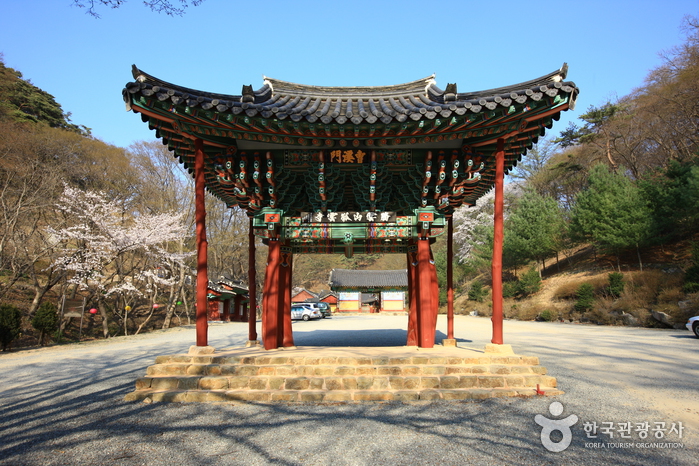Explore the Historic Beauty of Gounsa Temple
Welcome to Gounsa Temple, a historic and serene destination nestled on Deungunsan Mountain in Uiseong, Gyeongsangbuk-do. This temple holds a rich history dating back to the Silla Kingdom and offers breathtaking panoramic views of the surrounding natural landscape. Let us take you on a journey through the history, architecture, and spiritual significance of this remarkable Buddhist temple.
Discover the Origins
Gounsa Temple was originally established in 681 by Monk Uisang during the reign of King Sinmun of the Silla Kingdom. Over time, the temple underwent changes, including a name modification by renowned scholar Choi Chi-won. Once known as the “High Cloud Temple,” it became the “Solitary Cloud Temple” with the addition of two pavilions, Gaunru and Uhwaru. Today, Gounsa Temple is recognized as Branch Temple No.16 of the Korean Buddhist order, Jogyejong, and manages several temples in the Uiseong area.
Immerse Yourself in Tranquil Surroundings
Gounsa Temple truly lives up to its name, as it is situated amidst the stunning natural beauty of Deungunsan Mountain, often referred to as “Riding on the Clouds.” The temple’s remote location adds to its allure, providing visitors with a peaceful and serene atmosphere. As you explore the temple complex, you’ll be surrounded by breathtaking scenery, offering a perfect escape from the hustle and bustle of everyday life.
Admire the Gaunru Pavilion
One of the highlights of Gounsa Temple is the Gaunru Pavilion, also known as the “Floating over the Clouds.” This exquisite structure is supported by wooden columns resting on foundation stones, creating the illusion of the pavilion standing with its feet in the water. The intricate design and craftsmanship of the Gaunru Pavilion will leave you in awe, providing a remarkable backdrop for memorable photos and moments of contemplation.
Discover the Unique Yeonsujeon Hall
Within the temple complex, you’ll find Yeonsujeon Hall, a unique building that stands out for its architectural style. Built in 1774 during the 20th year of King Yeongjo’s reign, this hall was originally constructed to store Eocheop, the genealogical record of royal families. Unlike other Buddhist buildings within the temple, Yeonsujeon Hall showcases the Confucian architectural style, adding an intriguing element to your exploration of Gounsa Temple.
Getting There
If you’re planning a visit to Gounsa Temple, there are a couple of convenient transportation options available:
- Local Bus: From Andong Station, you can take Bus No. 438 to Gounsa Temple. Sit back, relax, and enjoy the scenic journey as you make your way to this historic destination.
- Taxi: If you prefer a more direct route, a taxi ride from Andong Station to Gounsa Temple takes approximately 30 minutes. Sit back, soak in the beautiful surroundings, and let the driver take care of the rest.
Whether you’re a history enthusiast, a nature lover, or seeking a peaceful retreat, Gounsa Temple offers a unique and captivating experience. Come and immerse yourself in the rich history, cultural significance, and natural beauty of this hidden gem in Uiseong, South Korea.

